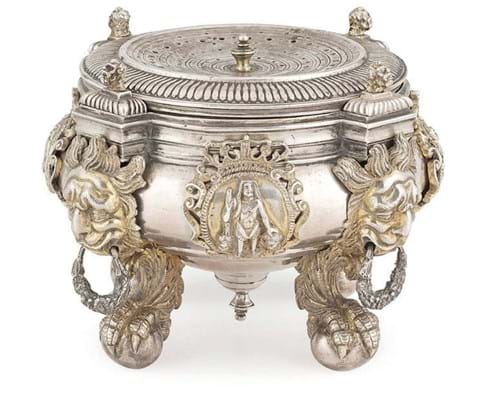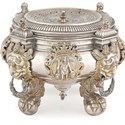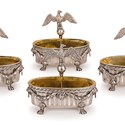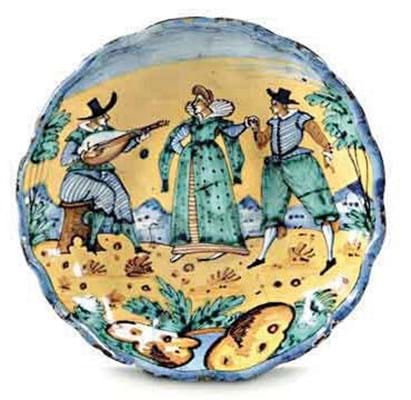Maltese silver is regarded as particularly desirable and can make strong prices at auction. Meanwhile, antique European silver is generally in demand in Italy, but especially examples of its own manufacture.
Some strong results emerged for works from both countries at a sale held by Wannenes (30% buyer’s premium) in Milan on May 21.
A set of four 6in (15cm) high Neoclassical parcel gilt salts sold for €80,000 (£71,430). They had marks for Rome 1791 and for Giuseppe Valadier, who is best known as an Italian architect of the Neoclassical era but who also created a number of designs for silverware.
The salts featured bipartite interiors and handles fashioned as in the style of imperial eagles with outspread wings. They also bore the armorials of the Chigi della Rovere family to the base and were catalogued as originally part of a set of eight.
The Maltese silver sander, 4¾in (12cm) high and 6½in (17cm) wide, was an early example, dated to 1697-1720 with assay marks for R Rerellos Y Roccaful. Of sculptural design, standing on lion mask-headed ball and claw feet, it sold for €16,000 (£14,285).
Genoese bidding battle
At the Old Master paintings sale held on June 12, as part of Cambi’s (25/21% buyer’s premium) auction series in Genoa, considerable interest was generated for a 22 x 17in (55 x 42cm) framed oil on canvas of an equestrian combat scene dominated by a sword-wielding rider on a white horse.
It was catalogued as by a follower of Anthony van Dyck, with a modest estimate of €4000-6000, but ended up selling for €52,000 (£46,430).
A highlight of the auction house’s porcelain and maiolica sale held on the same day was a 17th century 10in (25cm) diameter dish or crespina from the Montelupo factory in Tuscany. It was painted with a decorative scene of an elegantly attired couple dancing to the accompaniment of a seated lute player and realised €20,000 (£17,860), comfortably in excess of the €4000-6000 guide.
£1 = €1.12






















